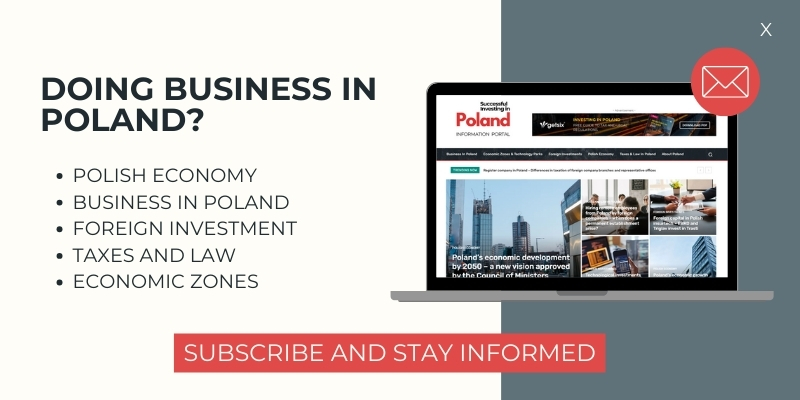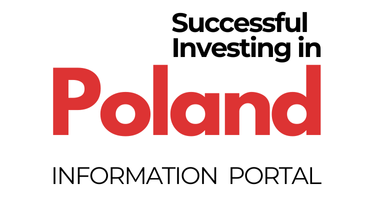The defence industry in Poland attracts investors – a growth opportunity under ReArm Europe
The European Union is preparing its most significant stimulus for the European defence sector in decades. In March, the European Commission presented the ReArm Europe / Readiness 2030 programme, aimed at strengthening the defence capabilities of EU Member States. At the heart of this plan lies the defence industry – both as a key component of security and a driver of economic growth. The planned increase in defence spending in Europe to 3.5% of GDP – up from the current average of around 2% – may significantly affect capital allocation decisions. For companies and funds considering investing in Poland, this creates growing opportunities to participate in the development of strategic sectors, including modern defence technologies.
SAFE – a European fund for security
A central financial instrument within the plan is the new SAFE fund (Security Action for Europe). The European Commission intends to raise €150 billion from the capital markets, to be distributed as loans among the Member States. Attractive terms (up to 45 years repayment, low interest rates) are intended to enable EU countries to significantly increase defence investments without breaching fiscal rules.
Importantly, countries will be able to maintain a budget deficit of up to 4.5% of GDP for four years, provided that these funds are allocated to defence spending. This level of fiscal flexibility sends a clear message: the defence industry is a priority.
The growing potential of the EU defence sector
Data show that Europe is already increasing its spending on armaments – in 2023–2024, annual growth rates reached up to 18%. Moreover, a growing share of defence budgets is being allocated to the procurement of equipment and armaments – in 2024 this accounted for over one-third of total spending.
This sends concrete signals to investors:
• increased demand for components (electronics, metals, control systems),
• the need for defence companies to expand production capacity,
• preference for intra-EU production (under SAFE, at least 65% of components are to originate in Europe).
Poland – a beneficiary of the new EU security policy
In this context, Poland’s defence industry is emerging as one of the main beneficiaries of the EU’s new strategy. National defence spending in Poland is among the highest in Europe – already exceeding 4% of GDP.
Investment is increasing at a rapid pace: • Between 2010–2019, annual investment in the defence sector averaged PLN 150 million.
• In 2023, this exceeded PLN 900 million.
• Following the first half of 2024, further growth is expected.
Rising expenditure translates into expanded production capacities – not only within the Polish Armaments Group (PGZ), but also among private manufacturers. These investments are of a long-term nature, signalling a sustained strengthening of Poland’s position in the European security ecosystem.
Revenue growth – the defence industry with export potential
According to estimates, revenue from Poland’s defence industry in 2023 approached PLN 12 billion (for key business activity codes), and on a broader scale may have exceeded PLN 23 billion. The main growth driver is the production of weapons and ammunition – a segment recording an average annual growth rate of 30%.
Although exports are not yet dominant (estimated at 10–13%), dynamic investment and modernisation of production lines may change this. Poland has the potential to become an important exporter of military equipment, particularly to regional markets.
Army modernisation = new contracts
Since 2017, Poland has signed defence contracts worth over PLN 330 billion. In the coming years, projected spending will reach around PLN 600 billion. Although current supplies are dominated by deliveries from the USA and South Korea, the share of domestic producers is steadily increasing.
For investors, this means access to long-term public procurement contracts, and for subcontractors – stable prospects for cooperation with major industry players.
What does this mean for foreign investors?
Amid the EU’s shift towards security, Poland is becoming a natural destination for foreign investment in the defence industry. Key advantages include:
• stable legal and economic frameworks,
• availability of a skilled workforce,
• strong domestic demand driven by public procurement,
• support from EU funds (e.g. SAFE).
For companies planning expansion in Central Europe, Poland’s defence industry is one of the most promising sectors to consider.
Summary
Rising defence spending, the European SAFE fund, and more flexible fiscal rules are creating a unique environment for the development of the defence sector. With growing investment and a clear ambition to reduce technological dependence on imports, Poland is attracting the attention of investors from across Europe. If your company is considering engaging with the EU defence sector – now is the time to look at Poland as a strategic investment destination.











